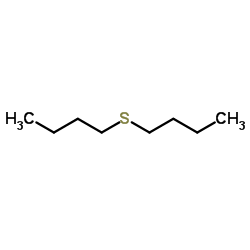Effect of temperature and initial dibutyl sulfide concentration in chloroform on its oxidation rate by ozone.
Stanisław Popiel, Tomasz Nalepa, Dorota Dzierzak, Romuald Stankiewicz, Zygfryd Witkiewicz
Index: J. Hazard. Mater. 157(2-3) , 319-27, (2008)
Full Text: HTML
Abstract
A scheme of dibutyl sulfide (DBS) oxidation with ozone and generation of transitional products was determined in this study. The main identified intermediate product was dibutyl sulfoxide (DBSO), and the main end product of DBS oxidation was dibutyl sulfone (DBSO2). It was determined that for three temperatures: 0, 10 and 20 degrees C there was certain initial DBS concentration for which half-times observed in experimental conditions were equal and independent from temperature. Generation of phosgene and water as by-products was confirmed for the reaction of DBS with ozone in chloroform. Results of the described study allowed to present generalized mechanism of sulfide oxidation with ozone.
Related Compounds
| Structure | Name/CAS No. | Molecular Formula | Articles |
|---|---|---|---|
 |
n-Dibutyl sulfide
CAS:544-40-1 |
C8H18S |
|
Preparation and application of sol-gel acrylate and methacry...
2014-07-21 [Anal. Chim. Acta 837 , 52-63, (2014)] |
|
The effect of dibutyl sulphide on hepatocytes studied by mea...
1981-01-01 [Acta Univ. Carol. Med. (Praha.) 27(1-2) , 139-45, (1981)] |
|
A quantitative single-molecule study of thioether molecular ...
2008-11-25 [ACS Nano 2(11) , 2385-91, (2008)] |
|
Stand-off tissue-based biosensors for the detection of chemi...
2001-09-01 [Biosens. Bioelectron. 16(7-8) , 439-46, (2001)] |
|
Gold and gold-iron modified zeolites--towards the adsorptive...
2010-07-15 [J. Hazard. Mater. 179(1-3) , 444-52, (2010)] |